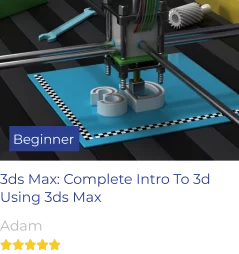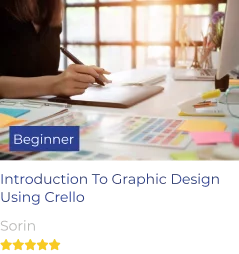Almost every company in the U.S. needs a graphic designer in their team. A graphic designer creates visual concepts using tools, software, or programs on a computer. If you are considering becoming a graphic designer, you must first have an idea of the graphic design skills and other things a graphic designer must possess.
Let’s take a look at what you need to know and graphic design skills to become a good graphic designer:
1. There are different graphic design career paths
There are a number of job opportunities for a graphic designer to explore. The usual graphic designer career path starts as a junior graphic designer. From there, you can start to choose a specialization of your skills and progress through mid-weight designer, senior designer, and beyond.
Below are the 8 common types of graphic design jobs to explore.
- Web Designer
- Logo Designer
- Multimedia Designer
- Flash Designer
- Layout Artist
- Photo Editor or Photoshop Artist
- Creative or Art Director
- Brand Identity Designer
You can work for a creative agency or an in-house design team at a big company. On the other hand, you can be self-employed and take the freelance route.
2. Building and mastering a skill takes time
It will take some time to attain that level of expertise. Even if you just completed a degree in graphic design or worked with few clients, you still only know the basics of graphic design. Taking more jobs and projects will make you a better graphic designer as you will learn more tricks and become more familiar with the process and software.
Graphic designers should also stay up to date on the latest graphic design trends. Graphic design software and tools constantly evolve at a lightning-fast speed. That is why graphic designers should remain current in the freshest and newest design trends.
3. Put the needs and requirements of your clients
There are different types of clients, but it all boils down into two types: those who know what they want and those don’t.
Most graphic design clients know what they want; however, they don’t have the design expertise to determine the realistic timeframe and budget to complete a project. Some clients allow graphic designers to do their thing and allow their creative juices to flow. On the other side, there are those clients who micromanage.
Regardless of your client’s personality, your client’s needs and requirements should come first. The key to dealing with clients is to understand them, be patient, respectful, build trust, maintain open communication, and prepare them for the process they will experience during a design project.
4. White space brings attention to the design elements
White space helps keep your design from being cluttered and confusing. It also helps tell our brain which elements in the design are important. White space, also referred to as negative space, is the space left in between the design elements. There are two types of white space: active white space and passive white space.
5. The role of colors in graphic design
The digital and print design industries use two major color systems, and as a graphic designer, you must be aware of these color systems and standards. These two color systems are RGB (which translates as red, green, black) and CMYK (cyan, magenta, yellow, key/black).
The visible colors in RGB are created by mixing the primary colors red, green, and blue. Graphic designers use RGB when viewing an image on monitors and screen, e.g., digital work.
You need to convert your digital work to CMYK when you need to print your digital work. CMYK is produced when two RGB colors are combined. Cyan (C) is the combination of green and blue, magenta (M) is red plus blue, yellow (Y) is red plus green, and K for black.
6. Hierarchy principle of design
Hierarchy is the arrangement or presentation of visual presentation to imply importance. It influences the way the human eyes perceive the information on what to focus on and in what order. The principles and characteristics of visual hierarchy include:
- Size – people read bigger things first.
- Color and tint – bright colors stand out and attract more attention from muted colors or grayscale.
- Alignment – Left-align headings, important words, and elements. This is because readers sans down the left side of the page, and out-of-alignment elements stand out over aligned ones.
- White space – More space draws the eyes of the readers towards the element.
- Style and Texture – Richer textures stand out over flat ones.
7. Master Photoshop, Illustrator, and InDesign
Photoshop, Illustrator, and InDesign are some of the top required skills and cornerstones in graphic design. So learning how to use these programs and their differences can help a graphic designer to produce the best output.
Adobe Photoshop
Photoshop is best used to edit and create photos, images, and pixel-based artwork, such as the creation of banners for ads and prints, video graphics, and icons and images for the web.
Adobe Illustrator
If you are creating website designs, images with text, and documents for web or print, Illustrator is the best option. Compared to Photoshop, Illustrator uses lines to work on your file and doesn’t pixelate or lose detail even if you resize things repeatedly. Illustrator also makes it easy to import and edit vector images. For example, if you need a USA map for a brochure or poster you can find one on a site like Vecteezy and then make changes without losing any image quality.
Adobe InDesign
InDesign is the perfect program if you are going to create a complex book layout, PDF presentation, newsletters, brochures, books, and anything that needs master pages and multiple pages. To start with, you can use some freebies available online like this heart svg freebie.
8. Learn Javascript, CSS, and HTML
If you want to become competitive in the graphic design field, you must learn how to code. Although many graphic designers can use drag-and-drop tools in creating functional websites, having basic coding skills such as Javascript, CSS, and HTML is essential because these are the programming languages behind most websites.
9. 50% of companies usually hire graphic designers with an average 3 years of experience
The average amount of experience most clients require a graphic designer to get hired is 2-3 years. Graphic designers who have at least 3 years of experience are able to get the best-paying jobs.
But don’t lose hope if you are new in the field because half of those companies still hire graphic designers with a bit of experience as long as they have a stunning portfolio.
10. Never stop learning
Initial education is really only the beginning. Whether you become a graphic designer by completing a degree or you are self-taught. The good news is that it is not hard to find resources these days. You can choose online courses and tutorials for learning new skills. Below are some of Skill Success’s online courses for graphic designers looking to develop their skills.
Ready to learn graphic design skills? Click here to get started.





